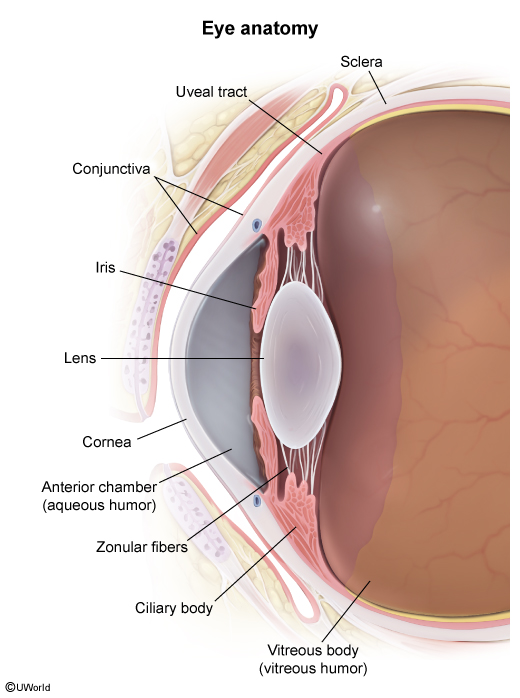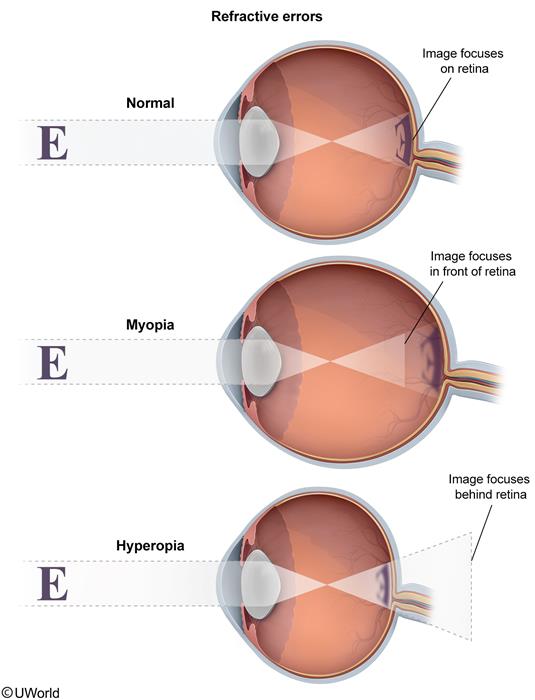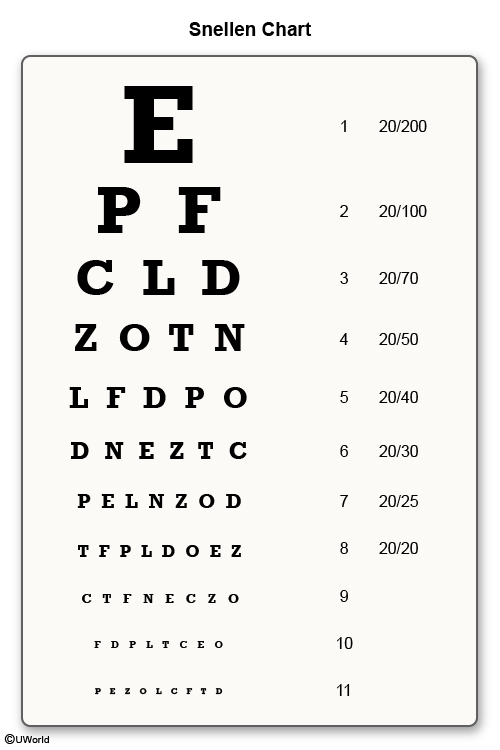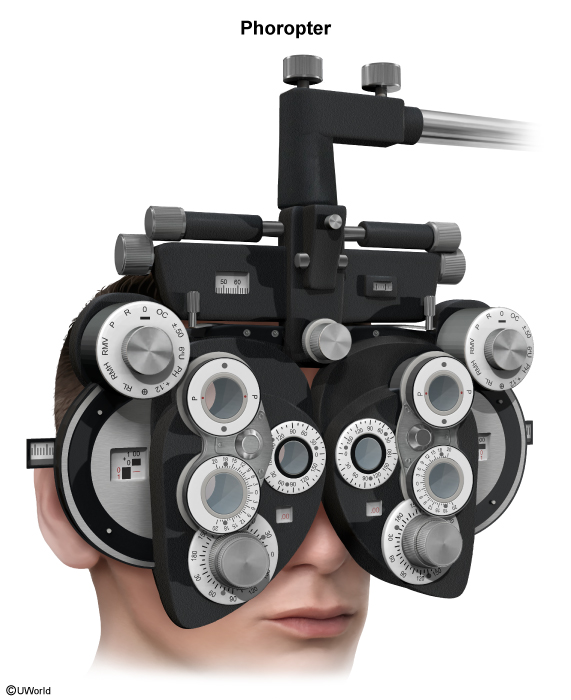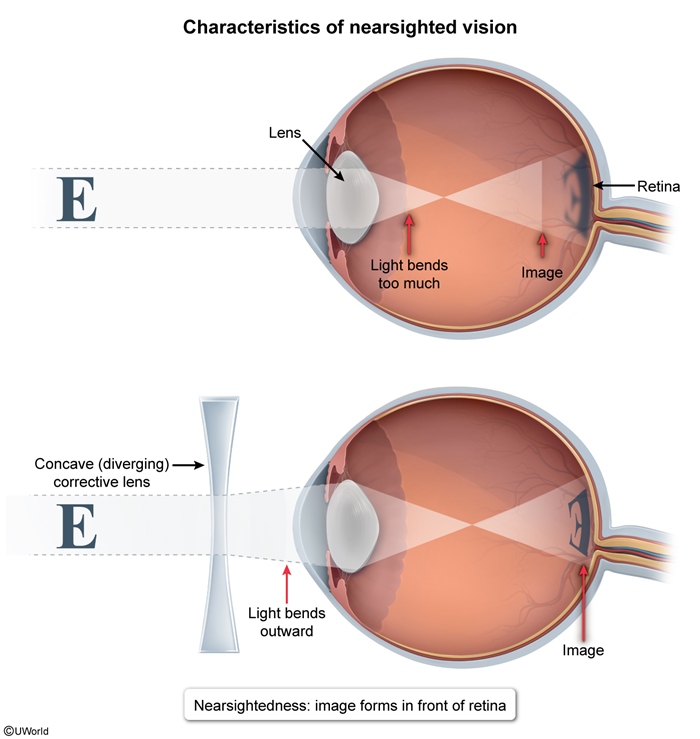Refractive Errors
Article Sections
Introduction
The eye is a sensory organ whose function is to capture and convert light into neural signals for vision. The first step in this process, refraction, involves the bending and focusing of light (reflected from objects) onto the retina to form a clear image. Refractive errors occur when the image does not accurately focus on the retina; these include myopia, hyperopia, astigmatism, and presbyopia.
Normal eye physiology
For vision processing to occur, light must first enter the eye and bend to focus on the retina, forming a clear, accurate image. This process, known as refraction, requires 2 structures to work in tandem (Figure 1):
- Cornea: The transparent outermost layer that provides most of the eye's refractive power. It provides a fixed amount of refraction.
Continue Learning with UWorld
Get the full Refractive Errors article plus rich visuals, real-world cases, and in-depth insights from medical experts, all available through the UWorld Medical Library.
Figures
